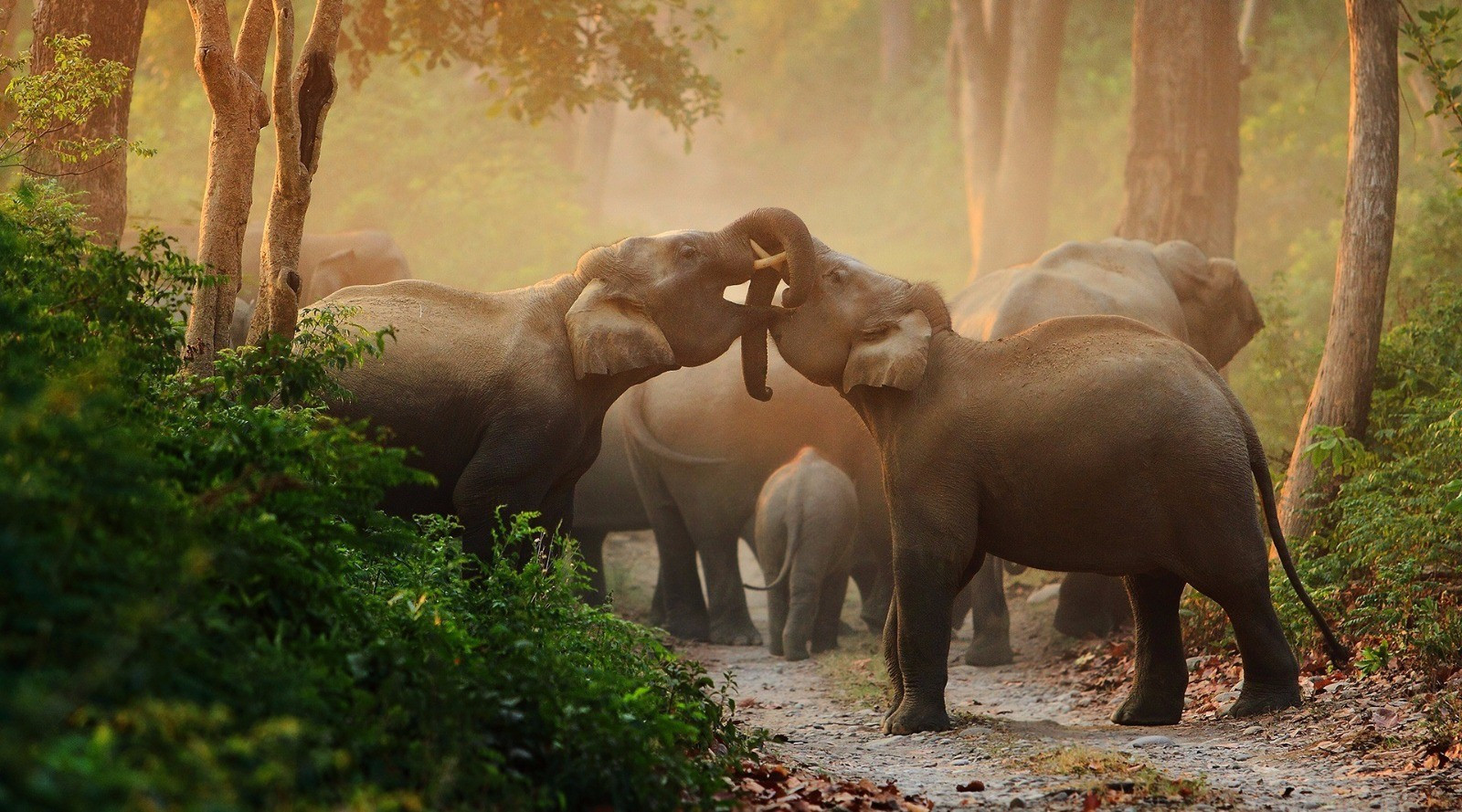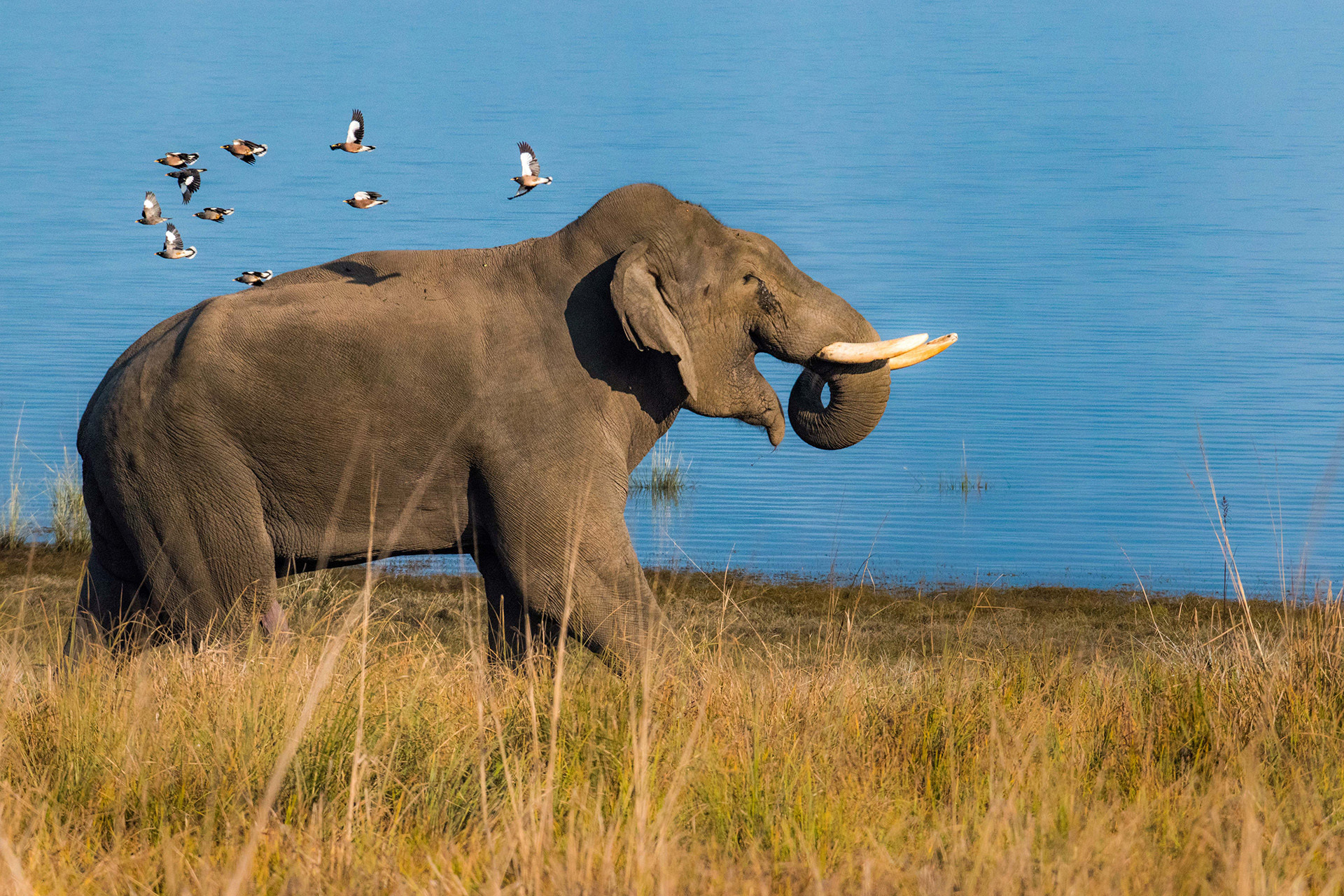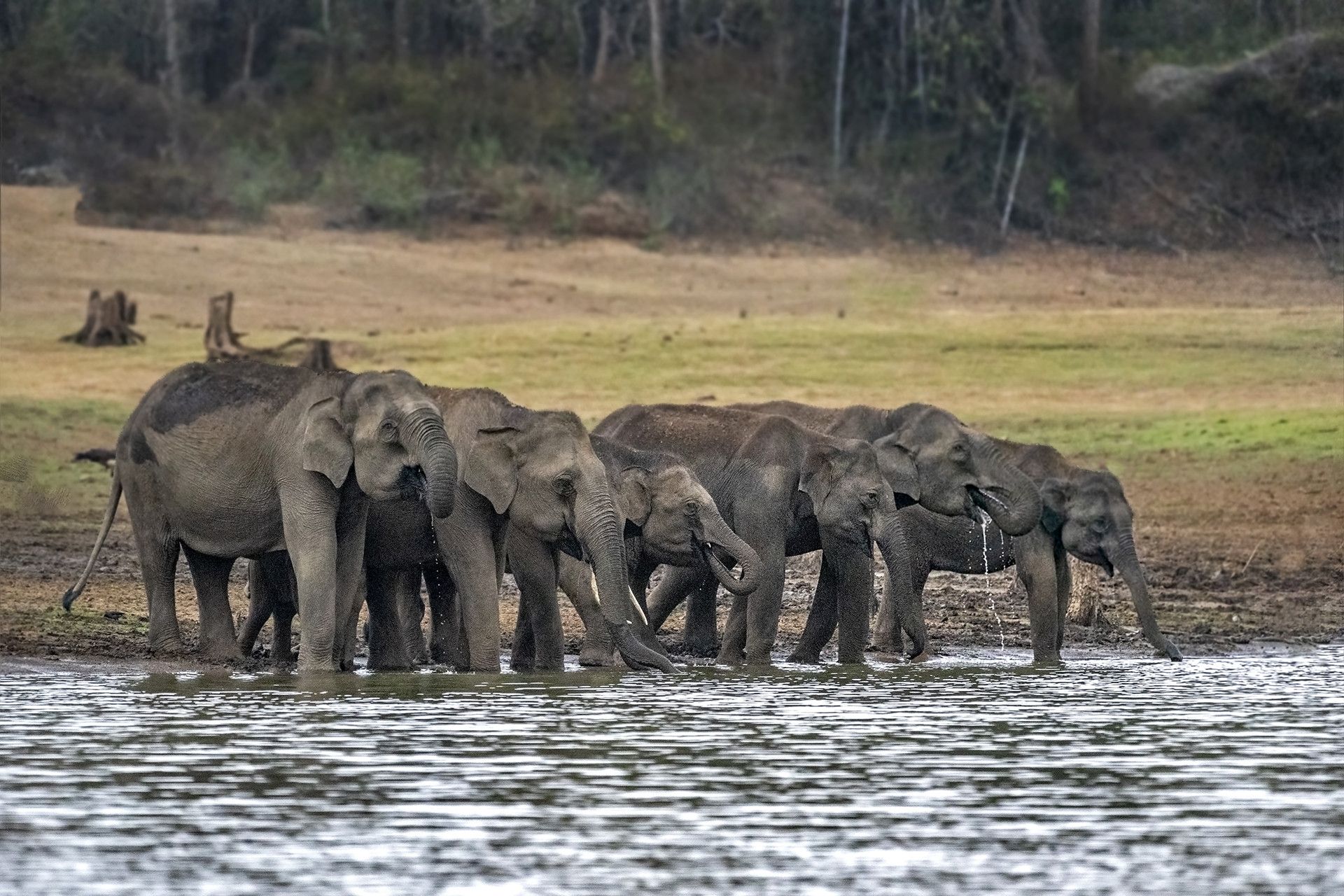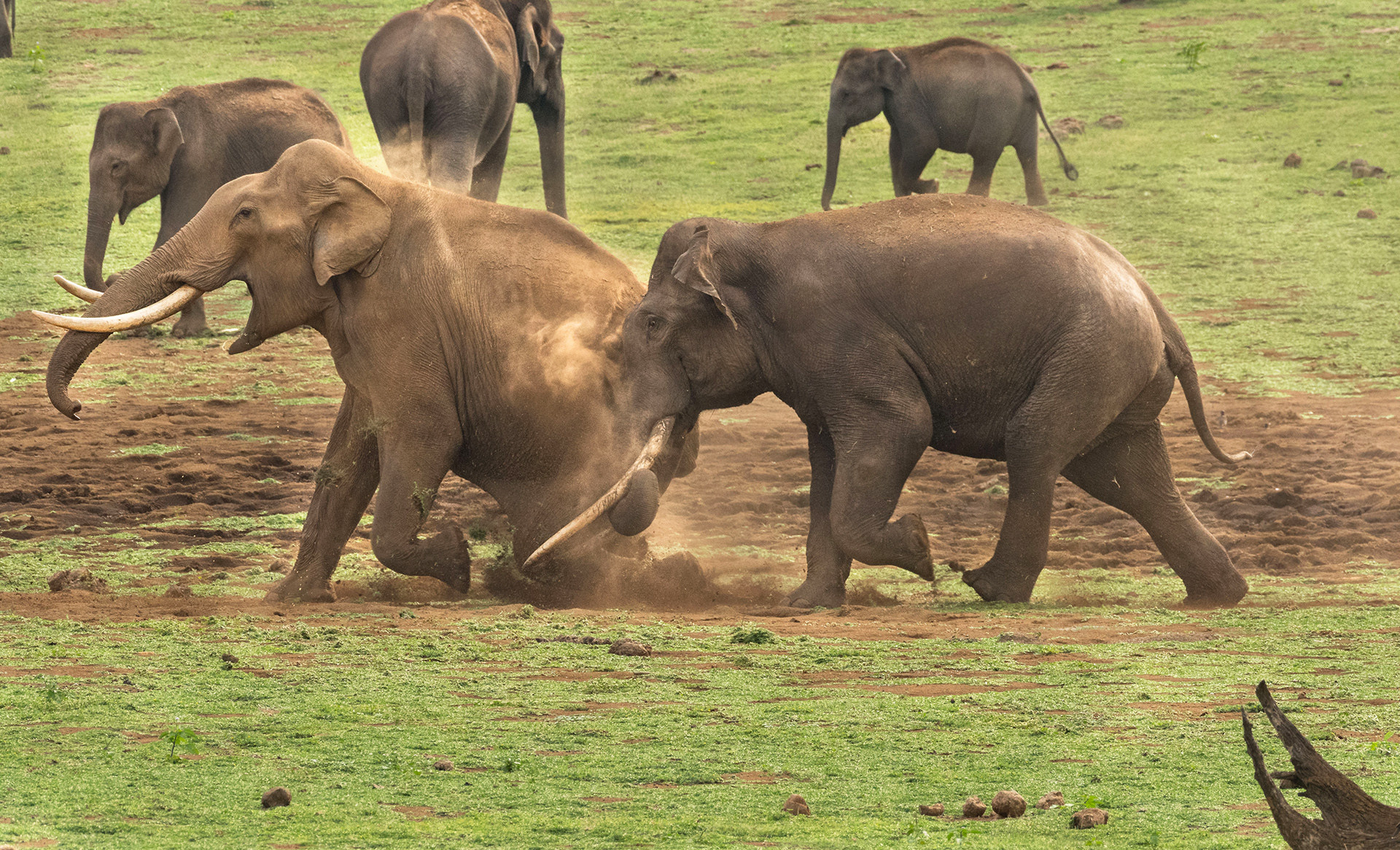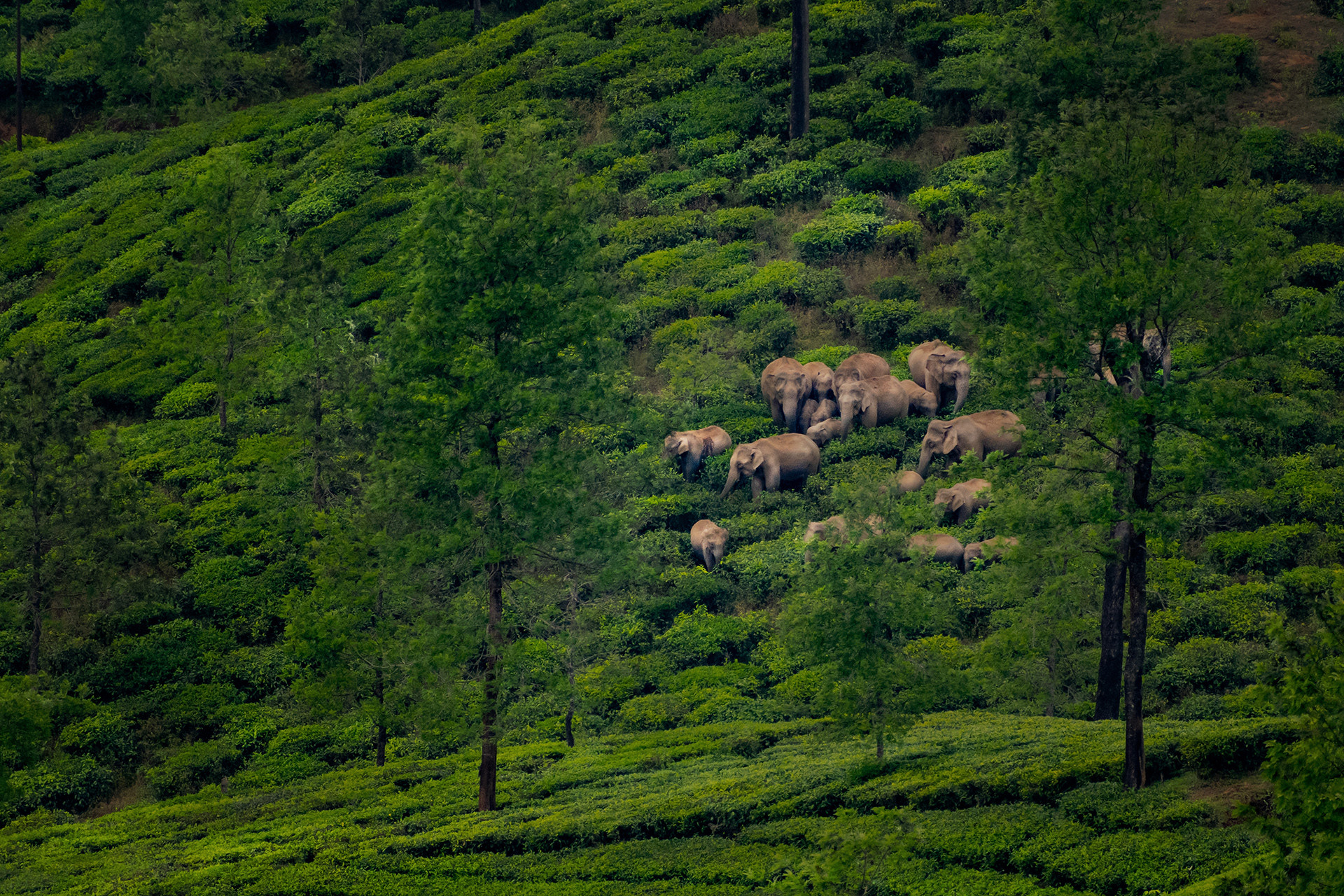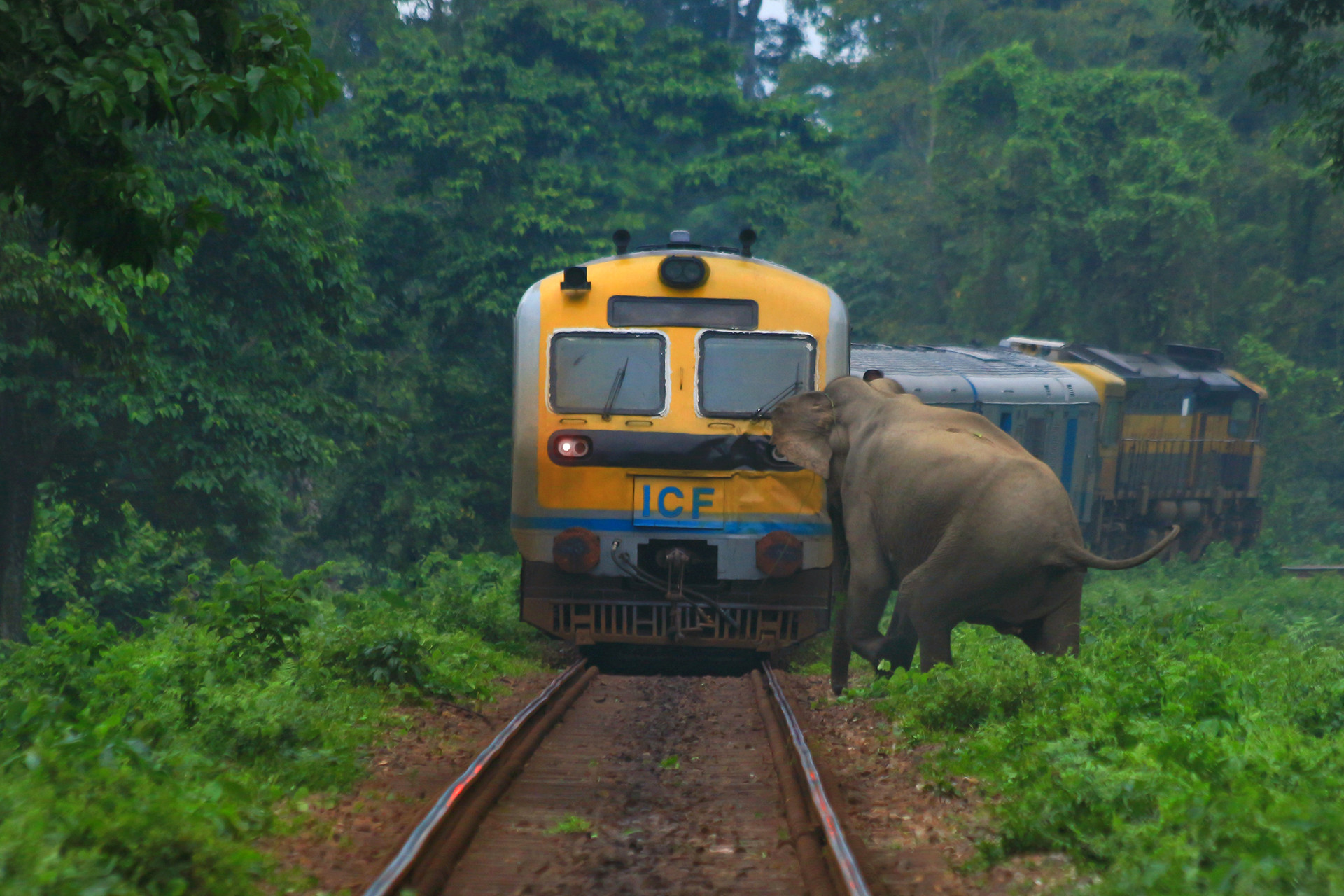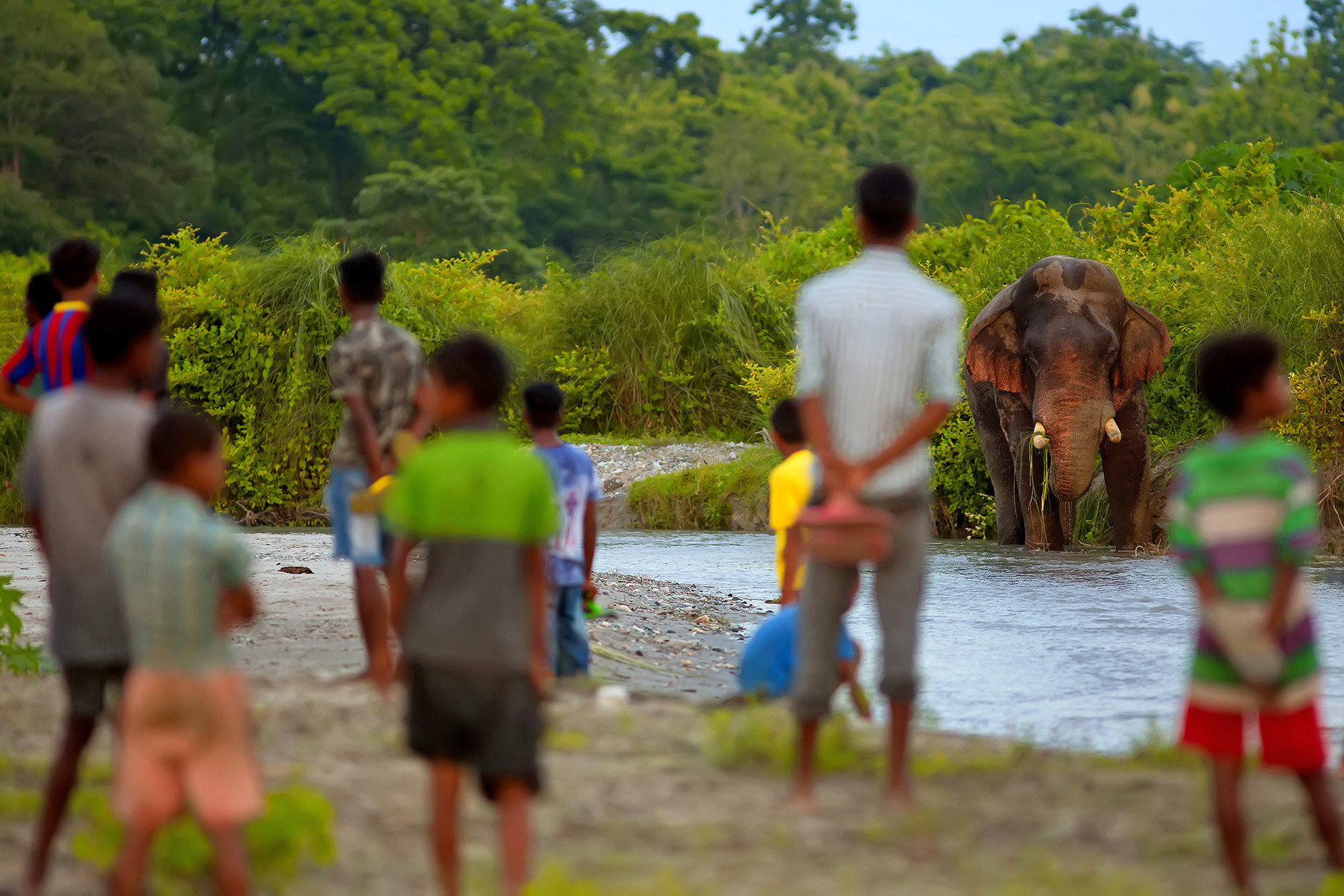Gentle giants, magnanimous jumbos, engineers of land ecosystems and one of the most intelligent species to walk the planet – elephants are known for their many attributes, yet none of these monikers conveys how vital they are.
Elephants have always held an aura of mystery around them. Their ability to express emotions, their complex social structures and the role matriarchs play in protecting their herds; the more you explore, the more there is to learn about them. We may not know it all, but here we bring you 10 interesting facts about Indian Elephants.
1 – If you were an elephant
Elephas maximus or the Asian elephant is one of the largest land animals in the world. Technically, the African Bush Elephant is slightly bigger than its Asian counterpart. The height of an Asian elephant can range anywhere from 6.5 to 9.8 feet, and the average weight ranges between 2.3 and 5 tons. Elephants are mostly grey in colour, but they develop lighter-coloured patches around their forehead and trunk as they age. Their habitat and diet contribute to this depigmentation. The elephant’s legs are well-adapted to support its large body. They are not angular like the legs of other mammals and have long bones without cavities. This gives them the strength to stand for extended periods and walk great distances. Asian elephants have small round ears compared to African elephants, and they are often seen fanning their ears. Their ears have many blood vessels, and the flapping helps cool the blood, thereby bringing down the body temperature.
2 – Following a labyrinth of old roads
Elephants are referred to as habitat-generalists which means that they can survive in a wide range of habitats including tropical evergreen forests and scrublands. Elephants prefer grasslands and shrublands as habitats as they need a lot of vegetation and water sources around them for survival. The Indian Elephant (Elephas maximus indicus) is found in parts of India, Bhutan, Bangladesh, Nepal, Sri Lanka, Thailand and Vietnam. Elephants are keystone species and greatly influence the land ecosystem. They create gaps in the vegetation when they forage, thus making room for new plants to grow. They are effective seed dispersal agents as they travel long distances. Their dung also provides nourishment for several plants in the wild, including indigenous species. This is why elephants are referred to as ecosystem engineers.
3 – Walking ten miles for breakfast
Elephants are herbivores and mainly feed on grasses. They also consume shoots, bark, fruits and cultivated crops like sugarcane. In the forests of Thailand, elephants are known to eat the large fruits of the Platymitra macrocarpa tree, thereby enabling seed dispersal of the ‘megafaunal’ fruit. The seeds are defecated and the elephant dung protects the seeds from seed-eating beetles, ensuring germination. Elephants assimilate less than 50 per cent of what they eat, which is why they spend most of their time eating. Did you know that elephants can feed up to 16 hours a day, consuming as much as 600 pounds of food and 25-50 gallons of water? When abundant food and water are available, they can live in nearly any habitat. They rest during the hotter periods of the day and can be seen foraging or walking towards a waterhole at other times.
4 – A hand to smash a wall and pick a cherry
A unique morphological feature of the elephant is its trunk. The elephant trunk is actually a long nose, with as many as 60,000 muscles. While swimming, elephants use their trunks as snorkels for breathing. Apart from helping them breathe while in water, the trunk aids in smelling, eating, drinking, grabbing things, and spraying water on themselves! Elephants also use the trunk to greet each other and warn other members of the herd when there is danger around. One way to distinguish between Asian and African elephants is by looking at the finger-like feature at the end of their trunks. Asian elephants have just one finger, while African elephants have two.
5 – Seeking other elephants
Elephants have the longest gestation period of all mammals. For African elephants, the gestation period is 22 months, and for Asian elephants, it is anywhere between 18 and 22 months. Female elephants give birth to one calf after this period. Did you know that elephant calves can stand on their feet immediately after birth? What perplexes them are their trunks, and they are initially not sure about how to use this appendage. Elephant calves spend a lot of time with their mothers and gain all of their nutrition from their mother's milk. At four to six months, they begin supplementing their diet by feeding on grasses and leaves. Offsprings are cared for by all the female members of a herd and are often seen playing with other calves, exploring the world around them.
Wildlife biologist Nachiketha Sharma witnessed the wonderful bond between a mother elephant and her calf as she tried to save her little one that was attacked by a tiger.
You may also like to read
6 – Wise old women to the rescue
Elephants are highly social animals and live in herds made of related females and their offspring. Once male elephants reach sexual maturity, they leave the herd to either form one of their own or lead solitary lives. Each herd is led by the oldest female who is the matriarch. She has deep ecological knowledge of the region and its drought and rain patterns. Herds depend on the matriarch to find water and food sources and also rely on her knowledge when they sense danger. Elephants have excellent memories and studies have shown that the older the matriarch the better herds survive droughts and other threats.
7 – Cities that are far too small
Asian elephants are listed as Endangered on the IUCN Red List of Threatened Species. Habitat loss, fragmentation, poaching for skin and ivory and human-elephant conflicts are some of the major threats faced by these gentle giants. Not to mention, across Asian countries, elephants are poached for ivory and skin trade. According to a 2017 census, India has the largest population of wild Asian elephants, spread across 65,814sq.km. India is also home to 29 elephant reserves, but many of these regions are in close proximity to human habitats. In India, Asiatic elephants are most concentrated in the Western Ghats; a region that provides them with a conducive habitat. Yet, habitat fragmentation is greatly altering the landscape and threatening the elephants here.
Animals adapt in various ways to human-altered landscapes which creates clusters of degraded ecosystems, causing local extinction of species. Wildlife biologist Kushagra Meshram throws light on the impacts of landscape mosaics and how animals respond to them.
8 – Grumbles from trucks and cabs
Linear projects – both road and railways – have resulted in several elephant mortalities in the country. Between 1987 and 2015, about 200 elephants lost their lives on railway tracks in India. Data gathered for the next two years shows that 49 elephants were killed in train accidents, of which most accidents occurred in the states of West Bengal and Assam.
Of the 88 identified elephant corridors in India, 21 have railway tracks running through them, increasing the risk of elephant deaths by speeding trains. For example, the proposed Hubbali-Ankola railway line in Karnataka will directly cut through the habitat of about 70 elephants. The ongoing climate crisis adds to this concern. With the loss of vegetation and drying up of water sources, elephants are forced to move around more than usual in search of key resources. Various mitigation measures are being considered by the Railways and Forest Departments such as buzzers to simulate the sounds of bees and regulation of train speeds. Conservation biologist Neha Sinha emphasises the need for sophisticated early warning systems to prevent elephant-train collisions. "What we need is a system that is predictable and does not just leave things up to the temerity of individuals," she writes.
9 – Towards succulent fields outside
A key aspect of elephant habitats is corridors which are narrow stretches of land that enable elephants to move freely between secure regions. Elephant corridors are also frequently used by other animals. Studies have shown that corridor sizes have become constricted over the years. About 74 per cent of corridors are now reduced to a width of one kilometre or less. Corridors are also being used by humans, leading to conflict situations. Two in three elephant corridors in India are impacted by agricultural activities. Conservation photographer Avijan Saha explains the impacts of blocking/altering elephant corridors using the example of the Teesta-Mechi Terai stretch on the Indo-Nepal border. This historic elephant corridor was blocked by the Government of Nepal to prevent crop damage. The animals were forced to look for alternate routes, which led to increased reports of conflicts as they began exploring human-occupied spaces. "We call it ‘conflict’, but it is just a means of survival for these animals; they need food and water to survive and we have taken over almost all of their habitats," writes Saha.
Addressing human-animal conflict situations is a tricky affair and sometimes requires intervention by the Forest Department or relocation of the animals into safer spots. Animals are often agitated by the crowds in human-dominated areas, which makes it difficult to rescue them or direct them to the safety of their habitats. Sahana Ghosh and Kartik Chandramouli of Mongabay India weigh in on the challenges of mob management during wildlife rescue missions.
10 – Being better, wiser and kinder
Several organisations and wildlife groups are working on elephant conservation by creating safer habitats for the gentle giants. The Wildlife Trust of India (WTI) is working on securing elephant corridors through its Right of Passage programme by rehabilitating local communities that reside near corridors and increasing public awareness about the importance of these passageways.
Nature Conservation Foundation (NCF) conducted a long-term study of the elephants that reside in the forests and plantations of Valparai, Tamil Nadu. Based on their observations, the team devised an early warning system where people get prior information about the presence of elephants in a region. Indicator lights were also installed in prominent locations. These warning systems helped to reduce structural damage and bring down elephant deaths in the region. Watch Living with Elephants to learn more about NCF's work in Valparai.
Wildlife Friendly Enterprise Network (WFEN) and the University of Montana – Broader Impacts Group have come up with a certification program to ensure the safety of elephants in tea estates across the world. Learn more about Certified Elephant Friendly™ Tea.
Still haven't gotten your fill of elephant facts? Here are some stories that can help:
→ A quick five with biologist Sreedhar Vijayakrishnan who is studying wild Asian elephant behaviour and physiology in human-use landscapes, particularly in the Anamalais of the Western Ghats.
→ Wildlife Biologist N Lakshminarayanan reminds us of the threats elephants face and why we need to be obstinate about our conservation measures.
→ Some in-house favourite reads about the gentle giants.
